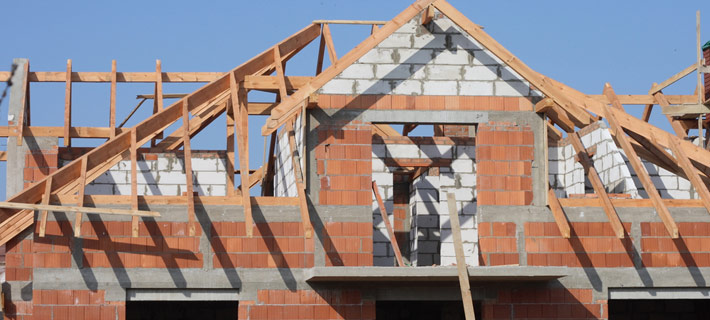For most of us, taxes can be an inconvenient truth. But whether you are a homeowner or the owner of residential land, or are planning to own your home one day, you will need to familiarize yourself with the ins and outs of the new property tax.
Thankfully in this month’s installment we will open the door on property tax, ushering you through to a clear understanding of how it impacts you.
As the November 30th 2021 deadline is fast approaching, let us guide you on what you need to know now.
What is Property Tax?
Property tax is money that must be paid to the government for the home that you own. The amount you pay is calculated by the government and based on the overall value of your home. The two pieces of legislation that guide this are the Property Tax Act Chap 76:04 and Valuation of Lands Act Chap 58:03.
So then…what is a valuation?
A valuation is a process of determining the market value of your home.
…and Annual Taxable Value?
This is the figure on which the specific rate of tax will be applied, to calculate what the Property Tax will be for your home.
Is paying property tax mandatory for homeowners?
Yes. Under the Property Tax Act, the individual who is determined to be the “owner” of the home, is required to pay a fixed rate of tax to the Board of Inland Revenue, based on the annual taxable value of their home.
The law also says if any amount of the Property Tax is outstanding by March 15th of the following year, a penalty at the rate of 10% of the outstanding tax will be added, in addition to interest calculated at the rate of 15% per annum.
….so, is submitting the Valuation Return Form also mandatory for homeowners?
Yes it is. Section 29 of Valuation of Land Act states that as a homeowner you must complete and submit a Valuation Return Form to the Valuation Division of the Ministry of Finance for the calculation of your property’s Annual Rental Value.
Under Section 32 of the Valuation of Land Act, a failure to submit your Valuation Return Form is actually a criminal offence and you will be fined $5, 000.
Are there any exceptions to this?
According to the Property Tax Act, there are. Homeowners who can satisfy the Board of Inland Revenue that they are unable to afford the tax because of their impaired health or age or some other special circumstance(s) or undue hardship, can apply for what is called a ‘deferral’. But to apply for this ‘deferral’, you must provide written proof/evidence to the Board of Inland Revenue for their consideration.
What is the established Property Tax percentage for any home?
For your home, the property tax you will be required to pay is 3% of its Annual Rental Value. The Government will provide further information on how this is derived.
Ok, cool. Got it. Can we unmask the math behind Property Tax calculation?
It really is very simple. To calculate the Property Tax on your home, this is what is done:
- The Commissioner of Valuations determines the monthly rental value (unfurnished) of your home
- This monthly rental value will be multiplied by 12 to determine the annual rental value
- 10% is deducted from your annual rental value. The remainder will represent your taxable value.
- 3% will be calculated of your taxable value and this will represent your Property Tax.
So that takes care of the main concepts and how to calculate property tax, what’s next?
Your Valuation Return Form must be submitted to the Valuation Division of the Ministry of Finance on or before 30th November 2021.
Now, most homeowners would have received a Valuation Return Form in the mail. If you did not, you can either collect one from any office of the Valuation Division or download it from the Ministry of Finance.
One thing to note though is, if you had submitted a Valuation Return Form previously AND a site visit was conducted for your home by a Valuation Division Officer, then you are not required to submit a Valuation Return Form. If however, you submitted a Valuation Return Form previously but a site visit was not conducted for your home by a Valuation Division Officer, you must complete and submit the Valuation Return Form to the relevant Valuation Division Offices.
Apart from the Valuation Return Form, what else must be submitted?
Together with the completed Valuation Return Form, you must submit copies of supporting documents. A list of these documents can be found on the front page of the Valuation Return Form. You can also check out the Ministry of Finance’s listing.
As a quick checklist, make sure your submission includes copies of as many of the following:
- Copy of One (1) National Identification document of Owner and/or Occupier
- National Id Card: Front and Back Required
- Driver’s Permit: Only Front Required
- Passport: Only Bio Data Page Required
- WASA Bill addressed to the property for which you are filing this Return. Only the first page with the Address and other property details is required.
- Title Document (e.g. Deed or Certificate of Title) (if available)
- Two (2) Photographs of the subject Property – Take photographs from the roadway and if this is not possible then photographs taken from inside the wall would be accepted.
- Front View: ensure that the full extent of the front of the main dwelling unit is visible (where physically possible)
- Side View: Ensure the full length of the Main Dwelling Unit is visible (where physically possible)
- If your property lies behind a high wall, kindly capture a picture of your property from inside the wall, if physically possible. If not, an image captured from a suitable curbside point will be accepted.
- Building Plans (if available)
- Survey Plan (if available)
- Rental/Lease Agreement (As applicable, if available)
Your completed Valuation Return Form and copies of as many of the supporting documents must be placed in a sealed envelope and dropped off to any office of the Valuation Division. Make sure the sealed envelope has the name of the owner/occupier, residential address of the owner/occupier, telephone contact and email address clearly written to the front. Find a listing of the nearest Valuation Division offices.
Understood. What happens with the Valuation Return Form and supporting documents?
The Valuation Division will process your Valuation Return Form along with your supporting documents. Depending on the quality and nature of the documents you submitted with your Valuation Return Form, you may also be contacted and advised to expect a visit from a Field Assessor. The Field Assessor will conduct a physical assessment of your home, only if needed.
Once processing of your submissions is completed, you will be contacted by the Valuation Division Officers either by mail, email or telephone and provided with the Property Identification Number (PIN) assigned to your home. The PIN is really a unique identifier for your home.
The Commissioner of Valuations will conduct an assessment of your home based on the information you submitted on your Valuation Return Form. After this, the Board of Inland Revenue will determine the annual taxable value and issue to you a Notice of Assessment, which will tell you the amount of property tax to be paid.
Note: that this information will need to be provided to TTMF so that your monthly payment amount can be adjusted as needed.
What if I disagree with my Notice of Valuation or my Notice of Assessment?
If you are dissatisfied with the valuation or assessment figures you can notify the Board of Inland Revenue of your objection, in writing.
For an objection of your Notice of Valuation, you have thirty days (30) days after receipt of a notice of valuation to issue your written objection.
For an objection of your Notice of Assessment, which lets you know the amount of property tax to be paid, make sure to issue your written objection within twenty-one (21) days of the Property Tax becoming due/payable.







